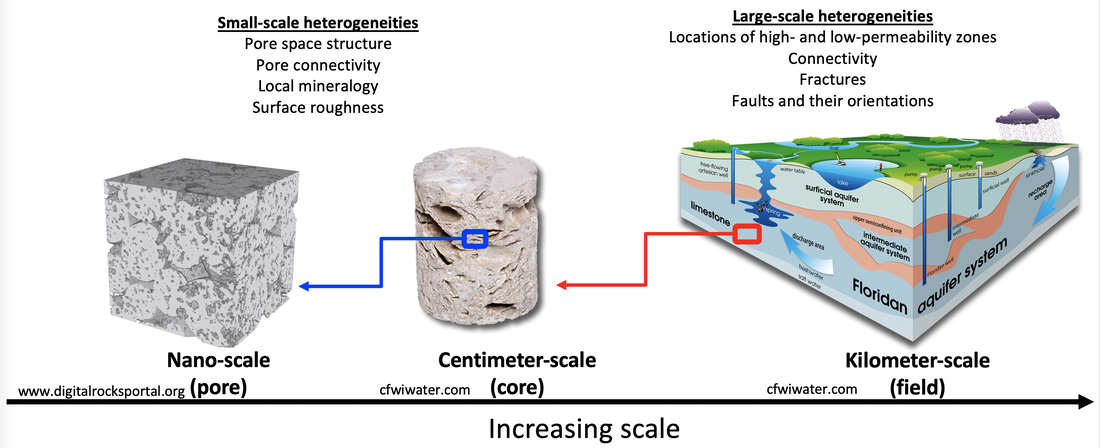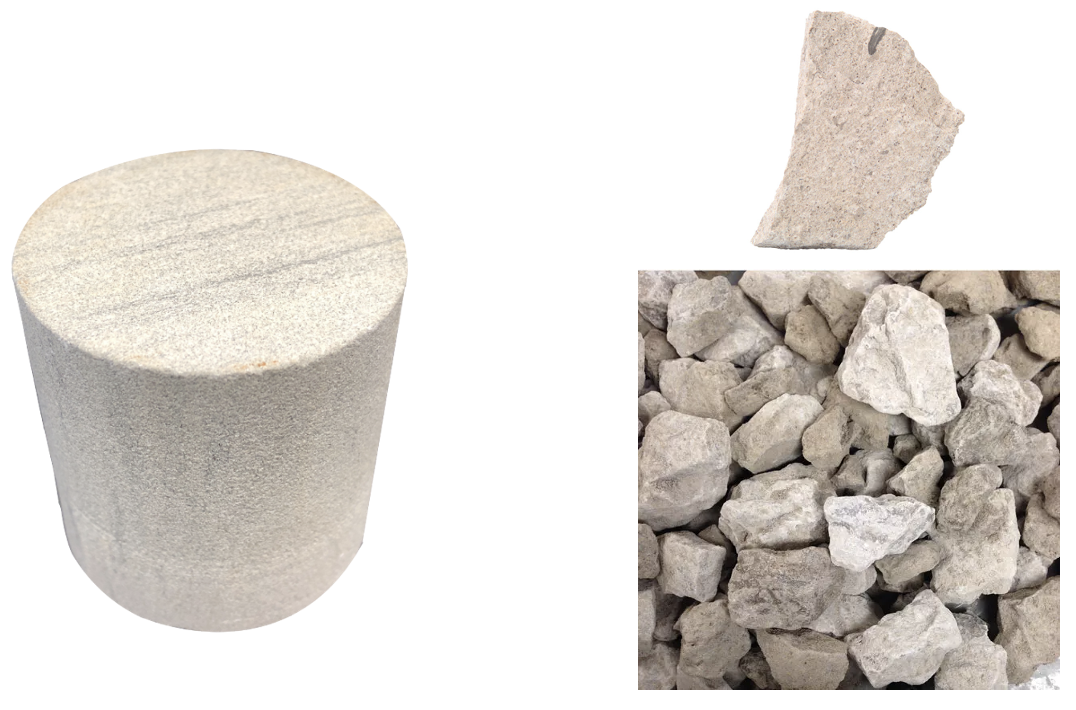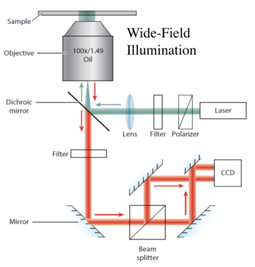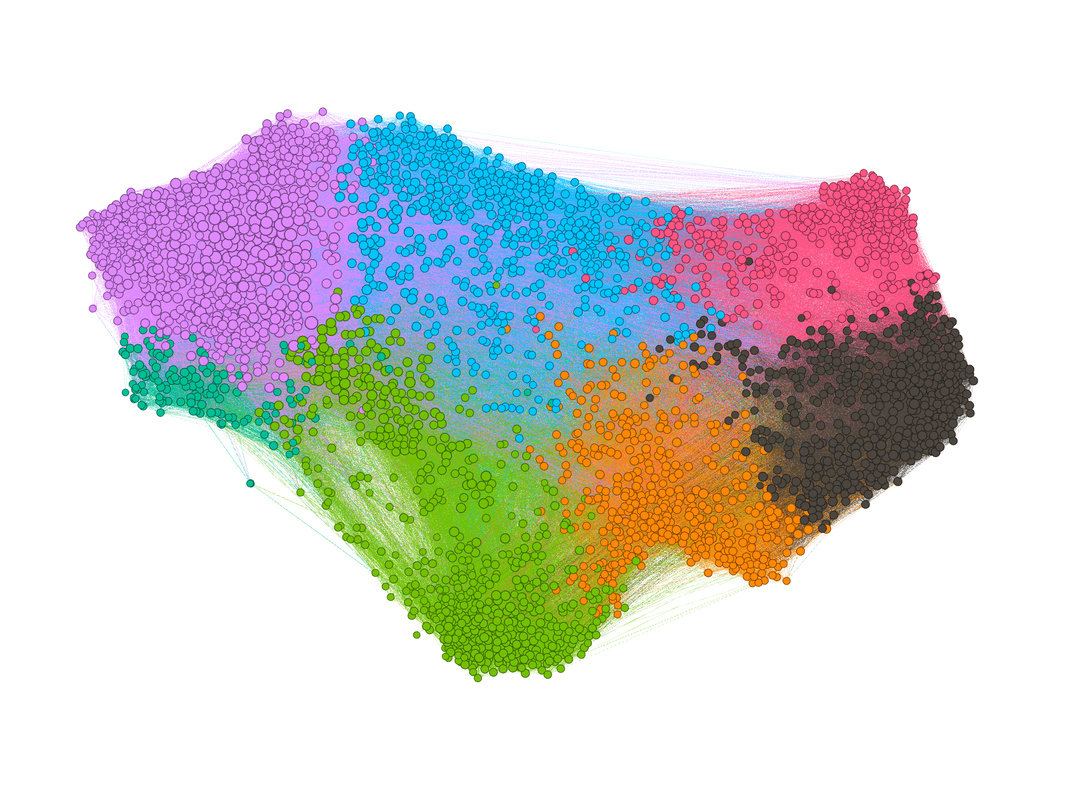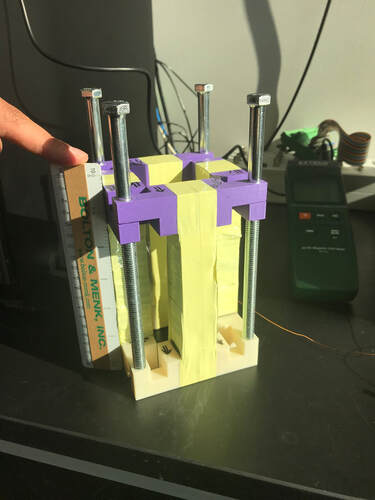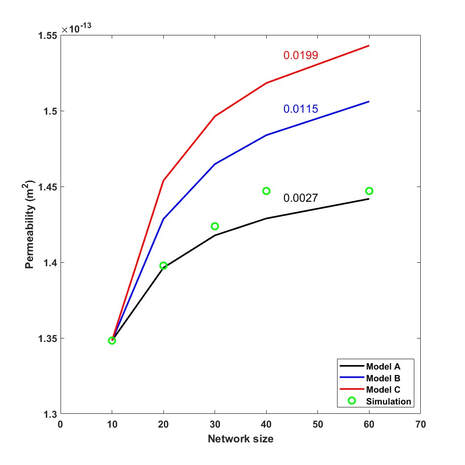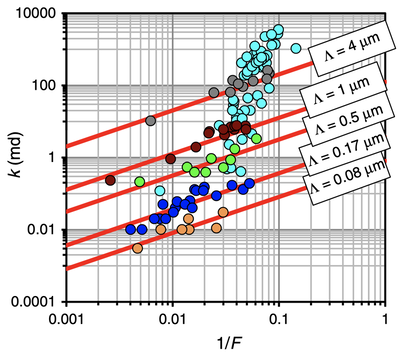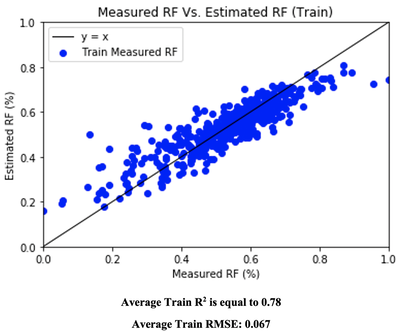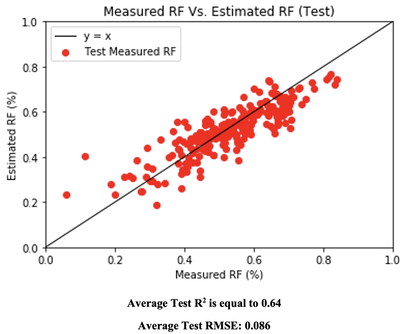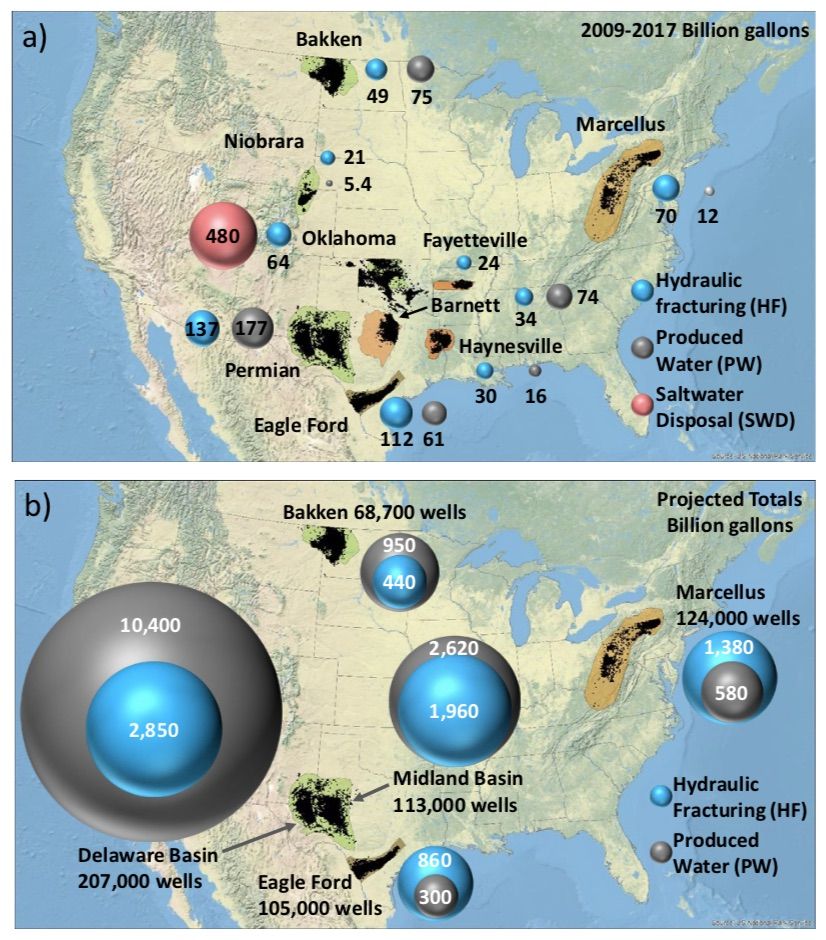RESEARCH
Porous Media Research Lab focuses on fluid flow and solute transport across scales from pore to field. Below is information about some ongoing projects.
Young's modulus measurement on core and crushed limestone samples
Probing mass transport dynamics in shales via single-molecule tracking
|
Characterization of mass transport dynamics in shales is of contemporary interest in the oil and gas industry. The main objectives of this projects are to: (1) investigate mechanisms of mass transport in shales on a single-molecule/single-nanostructure basis, (2) characterize diffusion, adsorption/desorption, and partitioning in nanostructured shales, (3) train geologists and chemists on mass transport phenomena in unconventional reservoir rocks, and (4) provide students with multidisciplinary training and research experiences. Single-molecule tracking experiments will be carried out on shale samples.
|
Complex network analysis
|
Water is a crucial element of the Earth hydrologic system. It is inseparable from life, essential for all living organisms, and plays a vital role in controlling photosynthesis rate and productivity of vegetation. In the past several decades, due to global population growth, demand for water substantially increased to support agricultural, industrial, and drinking water needs, which consequently caused surface and subsurface water resources to become unsustainable. Demographic transition, land use change, and climate variability have had varying stress effect on the planet’s water resources and made access to water supplies remain a challenge in many parts of the world.
Complex network theory is an emerging multidisciplinary approach that has been applied to various fields including mathematics, physics, biology, and computer science. Ideas from network science have also been successfully applied to the climate system, revealing interesting mechanisms underlying its functions and leading to the emergence of new concepts. |
The US rainfall network generated using the Event Synchronization method. Colors represent various communities in the nation. Results are for the June-July-August season, and the network consists of 3276 nodes and 224940 links.
|
Sap flow measurements via nuclear magnetic resonance

NSF award # 1936376
EAGER: Real-time measurement of sap-flow dynamics in sunflower via nuclear magnetic resonance
EAGER: Real-time measurement of sap-flow dynamics in sunflower via nuclear magnetic resonance
|
Sap flow is a process through which water and nutrients are transported from plant roots to leaves. However, its measurement is extremely complicated as it dynamically varies both temporally and spatially. The main objective of this project is to design and prototype a portable tool based on concepts from nuclear magnetic resonance (NMR) to accurately measure sap flow in plants. As the first phase of the project, a portable NMR tool was designed using a combination of a 3D finite-element analysis (FEA) simulation package and a non-dominated sorting genetic algorithm-II (NSGA-II) to optimize magnet arrays and coils. The optimally-designed NMR tool will be prototyped in the lab, and its magnetic field homogeneity and intensity will be experimentally validated. Sap flow estimated via NMR will be compared with that determined by the mass-balance method. Findings from the proposed idea will help refine mechanistic responses of crops to different water and temperature conditions at the genome scale through advanced “omics” technologies and also help refine existing crop models.
|
|
Effect of scale on flow and transport in porous media
|
Flow and transport in porous media are typically investigated at four main scales, i.e., pore, core, lysimeter, and field. A long-standing problem in hydrology and hydrogeology has been relating a property’s value at one scale (e.g., field) to its value at another scale (e.g., core). This process, called scaling, has been an active subject of research in the past several decades. The influence of scale has been known for years, and it is well documented that physical and hydraulic properties of soils and rocks, such as porosity, surface area, capillary pressure curve, tortuosity, hydraulic conductivity and dispersivity are scale-dependent. The main objectives of this project are to advance our knowledge by quantifying the relationship between scale and heterogeneities that have broad applications across various disciplines and to provide a solid theoretical foundation for the interpretation of the scale dependence of the properties. |
Rock typing
|
Rock typing, the process of grouping reservoir rocks based on their petrophysical properties, is an important tool for drilling production and identifying reservoir characteristics. It has been in use within the oil and gas industry for several decades with many different techniques being applied. Generally speaking, rock typing is based on either single-phase flow characteristics e.g., porosity, formation factor and permeability or two-phase flow properties e.g., capillary pressure and relative permeability curves. Although the literature on single-phase rock typing is vast and extensive, it is very limited when it comes to grouping rocks based on two-phase flow characteristics. The main goal of this project is developing a theoretic-based approach for two-phase rock typing. |
Estimating oil and gas recovery factors in reservoir rocks using machine learning
|
Accurately estimating oil recovery factor can save industry millions of dollars. Although oil recovery factor can be determined with relatively high accuracy at small core scales, its estimation at the reservoir scale is still a major challenge for oil and gas companies due to large-scale heterogeneities and complexities. Recently, with advances in machine learning algorithms, it is possible to analyze large databases even with missing data. If imputation and training algorithms are optimized, results can greatly improve the quality and accuracy of recovery factor estimation that helps companies during exploration, appraisal, and production phases. The main objective of this study is to estimate the oil and gas recovery factors from reservoir characteristics, such as porosity, permeability and lithological properties using a large commercial database including reservoirs from all around the world.
|
Effective permeability at the reservoir scale: Upscaling
|
Determining the effective permeability of geological formations has practical applications to site remediation, oil and gas production, and enhanced oil recovery. However, due to the presence of heterogeneity across scales, accurate calculation of the effective permeability requires precise characterization of reservoirs. In the literature, stochastic, theoretical, and numerical methods have been proposed to determine the value of the effective permeability. This research aims to compare numerical simulations from COMSOL with estimations from theoretical approaches in two and three dimensions.
|
Modeling gas flow in tight and ultra-tight porous rocks
|
Shale gas reservoirs are distributed all around the world with an estimated endowment worldwide of several thousand trillion cubic feet. Since these reservoirs have been successfully explored and produced in the United States, they recently became one of the major contributors to energy supplies not only in North America but also in China. Despite recent progress, we are still far from fully understanding mechanisms that affect gas transport in shales. Accurate modeling of gas relative permeability has broad practical applications in oil and gas exploration, production and recovery of unconventional reservoirs. In this project, we aim to apply concepts from the effective-medium approximation (EMA) and universal power-law scaling from percolation theory to model gas flow under variably-saturated conditions in unconventional reservoir rocks. Gas flow can be assumed to be mainly controlled by two main mechanisms contributing in parallel: (1) hydraulic flow and (2) molecular flow. Applying the EMA leads to determine effective conductances and, consequently, gas relative permeability at higher gas saturations. The universal scaling from percolation theory, however, can be used at lower gas saturation values. In the absence of microfractures, the proposed model should estimate the gas relative permeability reasonably well in shales and tight porous rocks.
|
